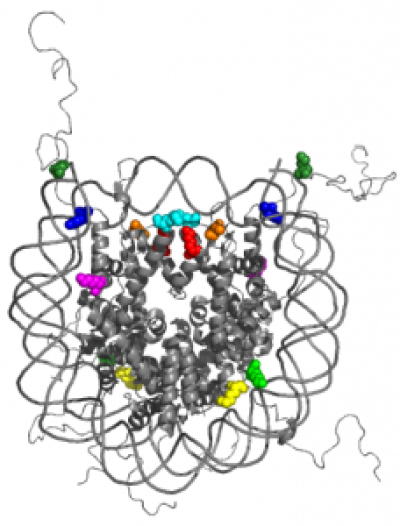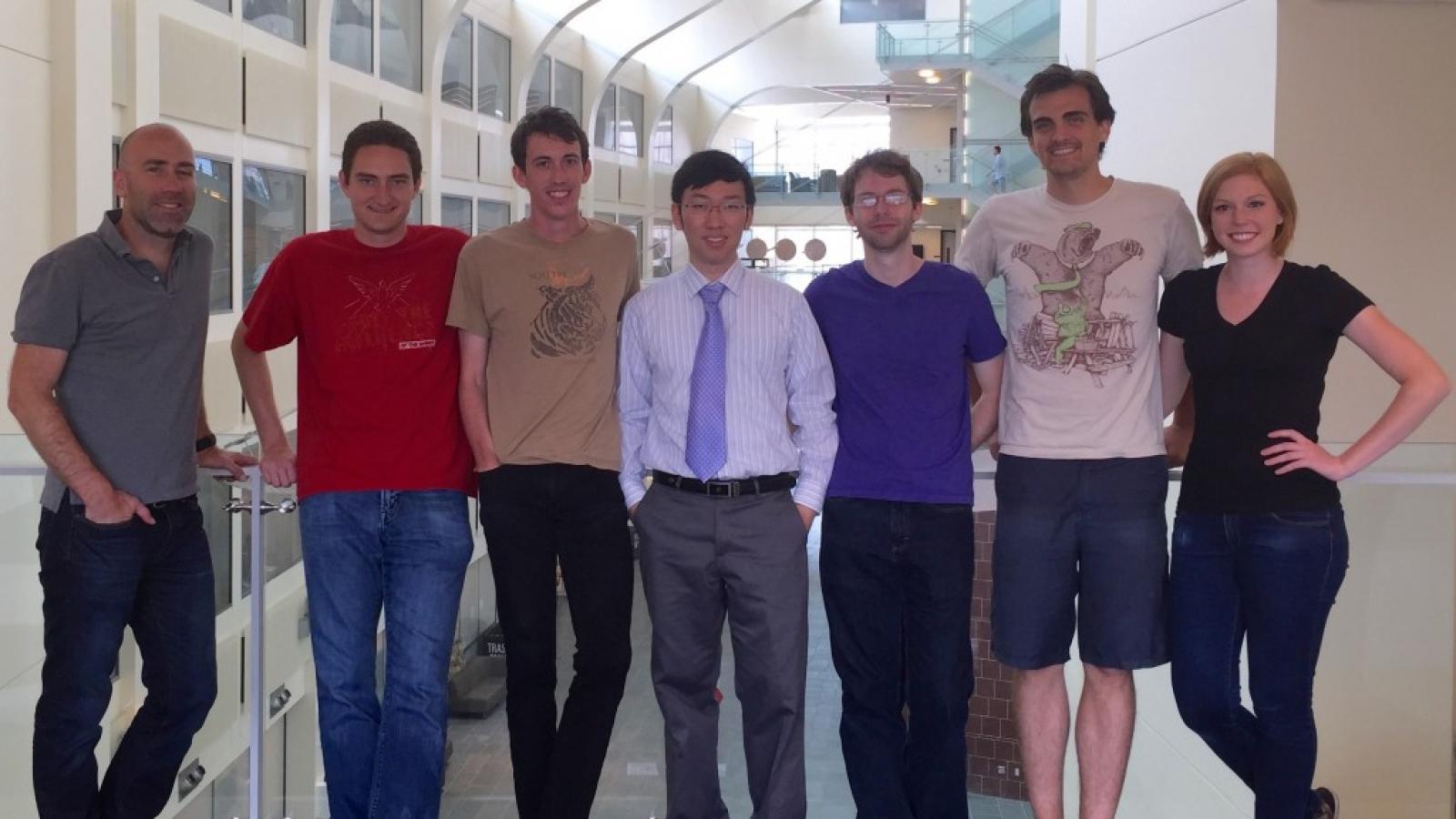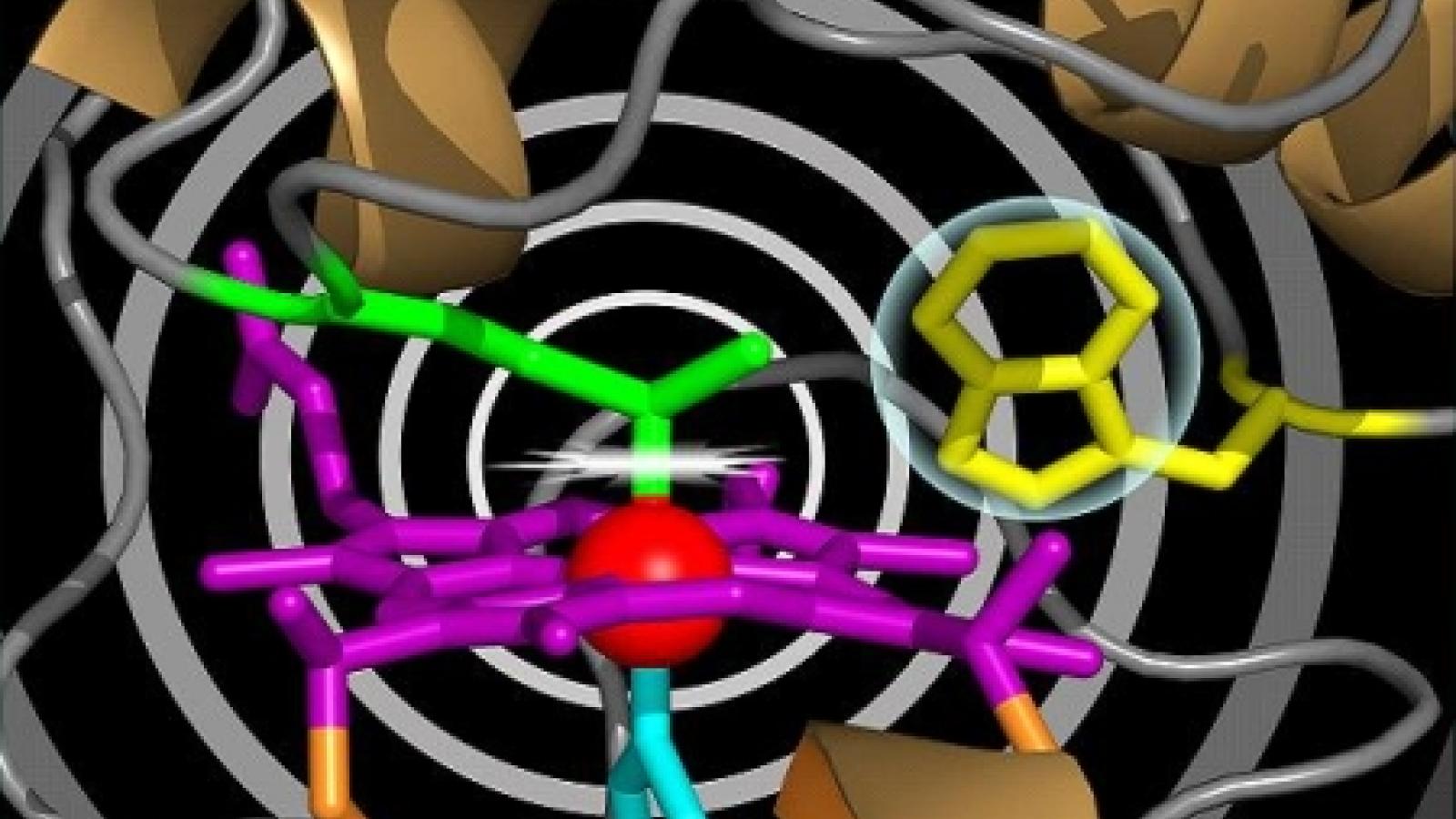
Biophysics is the application of physical methods to solve problems in biology. At Ohio State we have a young and dynamic group covering experimental and theoretical biophysics with numerous links to other departments and colleges throughout the campus.
The fundamental goal of biological sciences is to understand how life functions. This comprises fascinating questions on many different length scales from the individual molecule over cells and organisms to whole ecologies. Increasingly, answering the truly cutting-edge questions in the biological sciences requires interdisciplinary approaches that combine the traditional methods of biology with the methods developed in the physical sciences.
The current areas of study in the Biophysics group provide many examples of where cutting-edge physical methods are employed to solve important biological problems; e.g., the Biophysics group uses sophisticated femtosecond laser set-ups to observe how proteins convert light into chemical energy or how they repair damaged DNA. The group is able to hold on to individual biomolecules and measure mechanical forces in the piconewton range in order to dissect how the genetic material is organized into the chromosomes, and the group uses cutting edge microscopy and image analysis techniques to study how mechanical forces regulate cellular membrane trafficking during developmental stages of multicellular organisms.

Lastly, it uses the mathematical and computational techniques from statistical physics to interpret the vast amounts of biological sequence data generated, e.g., by the human genome project, and the folding of and interactions between biomolecules, as well as to understand the behavior of the Lake Erie ecosystem and the human immune system.
Most projects of the Biophysics group involve close collaborations with faculty and students from different departments. This enables graduates of the Biophysics group to develop into independent researchers with the experience in both physical and biological methods to answer critical biological questions. Graduates are able to transcend traditional areas so that they interact, collaborate and work with both physicists and biologists.
Faculty
PhD, Universität Potsdam, 1996
RNA structure: statistical mechanics and quantitative prediction
RNA editing
Biological sequence database searches
Biomolecules
Bioinformatics
PhD, University of Illinois, Urbana, 1979
Genetic regulatory systems
Modeling of the adaptive immune system in humans
Nonlinear ecological dynamics
PhD, University of Illinois, Urbana-Champaign, 2007
Experimental biophysics and computational biology
Three-dimensional cell and tissue imaging
Dynamics of clarthrin-mediated endocytosis in living organisms
Tissue morphogenesis, cell migration and signaling
PhD, University of Illinois, Chicago, 2001
Chromatin and chromosome structure and function
Chromatin remodeling
Mechanisms of molecular machines
Bacterial population dynamics and diversity
PhD, California Institute of Technology, 1999
Femtobiology
Biomolecular interactions
Protein dynamics


